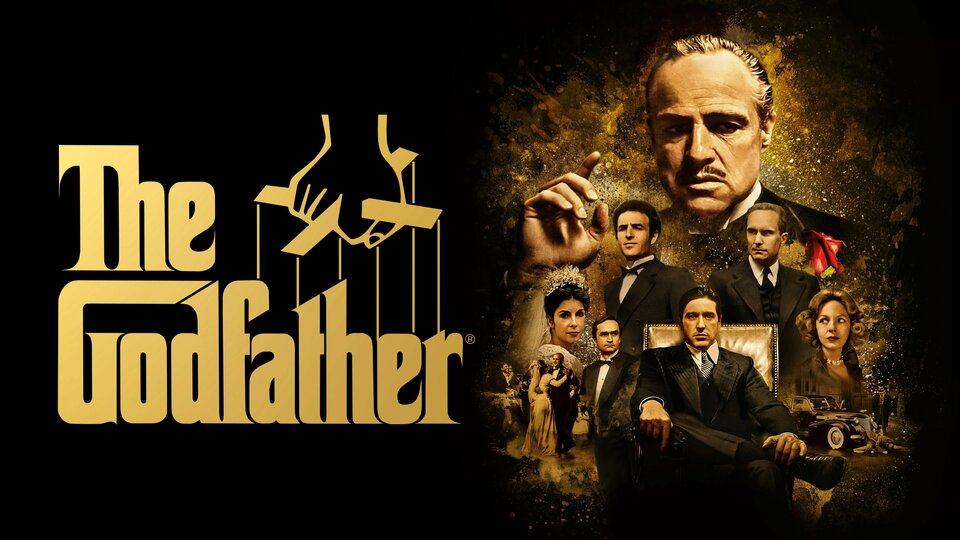As we approach one full year of this blog being in existence, I thought it fitting to watch and write about what is considered to be one of the greatest films ever made, The Godfather. That’s actually not true at all – this film has been on my watchlist for ages, and the stars finally aligned for my first viewing, and it happened to occur right around the one year anniversary of me launching Multiplex Confidential. There were actually a few catalysts to this momentous occasion: first off, this movie was just never really available to stream anywhere, but it now finally seems to have a permanent home on Paramount+. Secondly, this is a three-hour film, and three uninterrupted hours in front of a television by myself is pretty hard to come by. But the third and final catalyst was actually a book that I just finished up, called Last Days of the Sicilians. It is written by Ralph Blumenthal and chronicles the years-long FBI investigation of the “Pizza Connection”, and the Sicilian mafia at large. The book had my interests in New York City-based Sicilian mafia families piqued, and I happened to have a Sunday afternoon on my own that allowed me to finally sit down and watch one of the greats, The Godfather.
First and foremost, we need to address the elephant in the room: is this the greatest film of all time? I don’t think so, but I also couldn’t sit here and give you a definitive answer in its place either. I can, however, sit here and say that I do believe this to be one of the most influential movies of all time, and arguably the most important piece of pop culture entertainment in the last 75 years. Because that is what this film ended up becoming – so much more than just a movie about the mafia; it became a piece of pop culture, and it invaded everyone’s lives, whether you realize it or not. Whether it be the numerous quotes that have made their way into everyday lexicon, or it being the launching point for the careers of Al Pacino and Francis Ford Coppola, or even the concepts of a Godfather or consigliere being popularized and eventually adopted by the actual Mafia, the reach of this film knows no bounds. We have also The Godfather to largely thank for the inspiration behind other movies and television shows, like Goodfellas and The Sopranos.

One thing that The Godfather largely has to thank for its own existence, is lady luck. Most good things in life, not just movies, rely on a certain amount of luck; whether it be some stroke of luck that helped your favorite sports team to a championship, or your favorite movie being passed up by eleven other directors before finally being hesitantly accepted by its eventual director. Paramount Pictures was going through a whole host of problems in the late 60s and early 70s, and ended up being bought by Gulf+Western, which left a lot of things up in the air. Robert De Niro was initially up for the role of Sonny Corleone, before he was given the role of Paulie Gatto; however, once Pacino was cast as Michael Corleone, that opened up a spot in the film The Gang That Couldn’t Shoot Straight, which De Niro left The Godfather for. This then allowed De Niro to come back and play the much more tantalizing role of a young Vito Corleone, in The Godfather II. All told, the production behind this film was incredibly rocky and tumultuous, with a lot of things hanging in the balance that all ended up working out for the best. Too many times we have seen similar productions end up falling the other way and becoming complete bombs, but The Godfather had luck on its side and, despite all the chaos, turned out to be a massive success.
One of my favorite things about this movie, outside of the obvious incredible acting, the great score, the beautiful cinematography, and on-scene locations, is some of the subtle choices that Coppola made in his direction. This is a movie about crime and the mafia, yes, but Coppola made the distinction to really tell this as a family story, instead of the usual gangster film story arc. The film opens on a thirty-minute wedding scene, not some big heist or gruesome murder. We focus on the dynamics between an aging family boss and his three sons trying to keep the family business going, not one specific person who does lines of coke and cheats on his wife all the time and has a friend with a bad temper who just murders people when they insult him. Even when it shows the uglier, more menacing side of mafia business, it does so without having the f-word screamed in your face 400+ times in a span of 150 minutes. This is what resonated most with me while watching The Godfather and is what has stuck with me the most as I’ve pondered on the movie and read reviews and listened to podcast episodes – the art of subtlety, and of reservation. It reminds me a bit of one of my favorite mottos for acting: yelling ≠ good acting. Take that and just apply it to all other aspects of telling a story through a film lens, and you have what, in my opinion, makes this film so much better than any other gangster or mafia-related film.1
With that being said, let’s offer some categories that you can’t refuse.
By the Numbers
- Release date: March 24, 1972
- Budget: $6-7.2 million
- Box office: $250-291 million2
- Run time: 175 minutes (2 hours, 55 minutes)
- Letterboxd rating: 4.5 ★3
- My Letterboxd rating: 4.5 ★
- Rotten Tomatoes: 97% (Certified Fresh ?)
- Accolades: 26 total nominations, 12 total wins
- 11 Academy Award nominations, 3 wins (Best Picture, Best Actor, Best Adapted Screenplay)4
- 7 Golden Globe nominations, 5 wins (Best Motion Picture – Drama, Best Director – Motion Picture, Best Motion Picture Actor – Drama [Brando], Best Screenplay, Best Original Score)
- Five: This was Francis Ford Coppola’s fifth feature film that he directed
Best Scene
- The Opening Scene: I’ll be honest, it will be hard for me to ever write about a movie and not include their opening scene in this category. What sets the greats apart from the rest is a killer opening scene – you’re setting the table for the rest of the film, and introducing the audience to what story is about to be told. In the opening scene of The Godfather, we hear stories of Vito’s power and influence, we see how he chooses to handle his business, and we also see how important family is to him. It’s the perfect way to introduce us to the titular character, while not jumping the shark and giving away too much at the top.
- The Christening: I mean, who doesn’t love a good montage? And for what it’s worth, this is one of the earliest versions of a montage in American cinema that really worked and accomplished it’s goal. The duality of Michael taking his oath to be Godfather to his sister’s baby, while also fulfilling his promise of taking over as Godfather of the Corleone family is executed to perfection. It’s a killer scene that sticks with you and, I imagine, will remain one of the most memorable scenes from the entire trilogy.
- Don Corleone Meets with the Five Families: Pound for pound, I think this is Don Corleone’s best scene in the film. We get to see Brando’s chops in play without the assistance (or distraction) of any other major co-star appearing in the scene. It’s like when LeBron James decided in Game 6 of the 2012 Eastern Conference Finals5 against the Boston Celtics that he, and only he, could win this game for the Miami Heat. Sure, he had his Big Three companions in Dwyane Wade and Chris Bosh ready to help, but he took the game over himself and reminded everyone of why he was the best player in the world. That’s like what Marlon Brando is doing in this scene – there’s no James Caan or Al Pacino to steal his shine – it’s just him.
- Vito and Michael in the Garden: This scene really shows you how much of a family the cast really felt like with each other. I truly believe that I am watching an aging father with his burgeoning son, sharing an intimate conversation in the garden, wishing that things hadn’t turned out this way. Vito imparts wisdom on Michael and shows that while may have gone soft, he’s still just as wise; but he also implores Michael to have the phone calls tapped, before being reminded that Michael had done that a while ago, showing that he is indeed aging and not fit for the role of Godfather anymore. Killer acting from Pacino and Brando, with some great cinematography and dynamite dialogue.
While I do believe that Don Corleone’s meeting with the Five Families is the most powerful scene, I think the garden scene with Michael has to take the cake here. I could watch it over and over again, and I even got the feeling as I was watching it for the first time of “man, this is just a really good scene.”
What’s Aged the Best
Cinematographer Gordon Willis and Coppola made the decision early on to not use any modern filming devices, including helicopters or cranes or zoom lenses – this, paired with all of the on-location filming, allows for the film to remain timeless and still look beautiful all these years later. Their intention was to make you feel like the film was coming straight out of the 1940s, and they did just that. As mentioned earlier, Mario Puzo used the term “Godfather” in his book, which was eventually adopted by the Sicilian Mafia and is now part of their regular lexicon. So much of the dialogue from this film has aged so well; there are so many incredible quotes that people use all the time, and “I’m going to make him an offer he can’t refuse” was even voted as the second-best movie quote of all time! All of the Sicily stuff makes my list as well – I will forever beat the drum of on-location shooting, and the countryside of Sicily looks like the absolute perfect place to hide out for a few years.6 For the opening wedding scene, instead of hiring real extras, Coppola decided to just shoot the scene in a Staten Island neighborhood and use nearly 750 locals as extras. Next time you watch the scene, you can definitely tell some of the people in the background don’t really know what to do, but this decision also makes it feel like a very real wedding and was a great choice. One final thing here – and this is a cool one. In 1971, while The Godfather was in production, producer Albert S. Ruddy met with Joseph Colombo (head of the Colombo family) and over 1,000 members of the Italian-American Civil Rights League to discuss different aspects of the film. The league claimed that the film emphasized stereotypes of Italian-Americans, so Ruddy removed all instances of the words “mafia” and “Cosa Nostra” at the request of Colombo. They had several other meetings with the league, with Colombo’s son Anthony reportedly making Ruddy an honorary captain of the league and giving their blessing over the film. How cool!
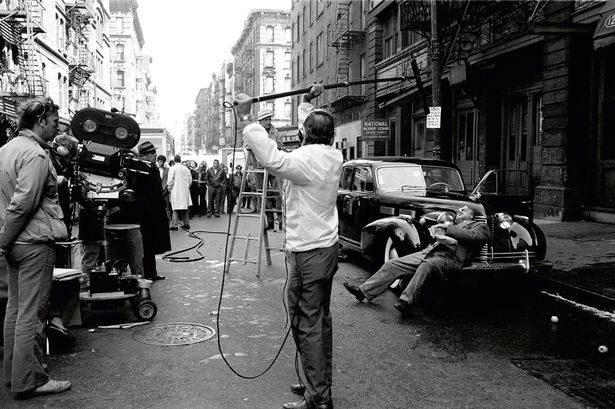
What’s Aged the Worst
For a film from 1972, this section could definitely be a lot worse. I believe we only have one instance of the n-word being dropped, but it comes in the context of a scene in general that just hasn’t aged well at all. Just some blatant, “of-the-time” racism that wasn’t really necessary and didn’t drive the story forward in any way. A small but obvious one, is the very blatant missed punch when Sonny goes to beat up Carlo after finding out that he has been abusing Connie. They clearly were shooting it from the wrong angle, but the fact that it made it into the final cut, and everyone can very clearly see James Caan’s fist goes several inches past Carlo’s face is not great. And finally, far and above what has aged the worst, is this simple fact: Simonetta Stefanelli, who portrays Apollonia (Michael’s first wife from when he was living in Sicily) was born in November of 1954, and The Godfather was shot throughout 1971, making Stefanelli 16 years old throughout production, and 17 years old when the movie was released. Yikes.
The Jason Clarke Award (What’s Their Name Again?)
I have to be honest with you, there was only one nominee for this category – with this movie now being over 50 years old, I was bound to not know or recognize the vast majority of this cast. Obviously, I know all of the big players, but there was one who I knew, recognized from other projects immediately, but had no idea their name – and that is Talia Shire. Shire is pretty exclusively known for her roles in The Godfather and The Godfather Part II, along with portraying Adrian in the Rocky series, which is where I immediately knew her from. A little fun fact about her, if you didn’t already know: Talia Shire is the sister of Francis Ford Coppola, mother to Jason and Robert Schwartzman, and aunt to Nicolas Cage. I feel like her family tree is the Hollywood version of the Anoa’i family tree in wrestling. Congrats, Talia!
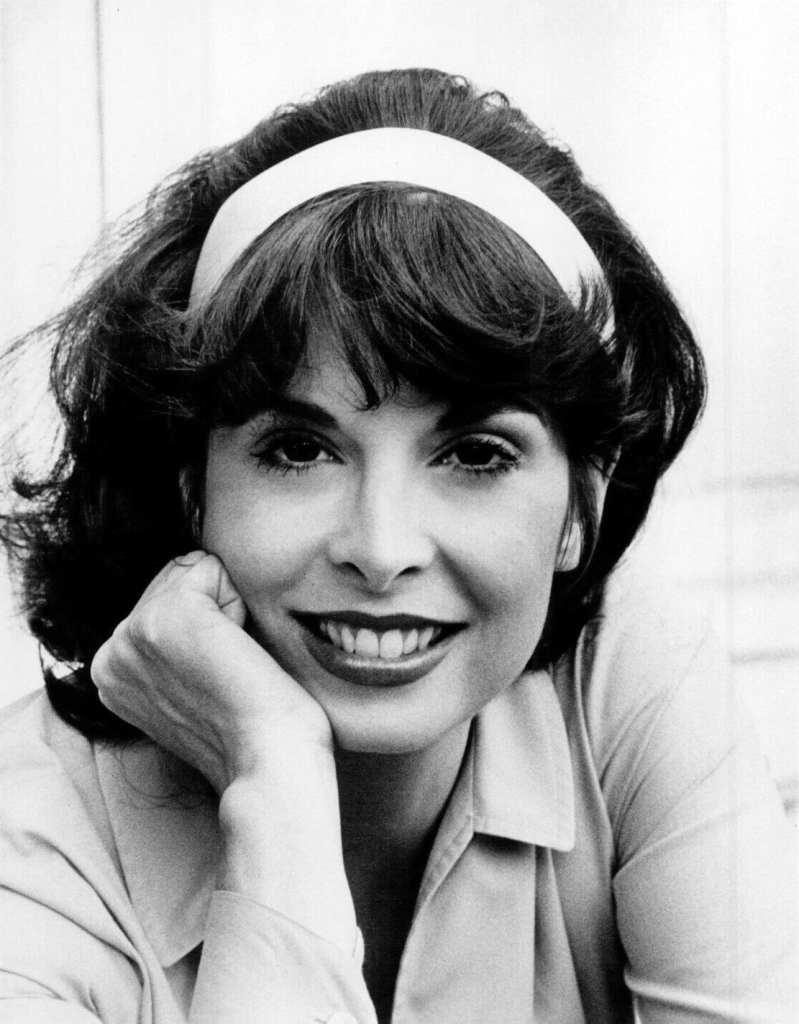
The Jack Nicholson Award (Big Impact, Small Role)
This one comes down to three people: Richard Castellano as Peter Clemenza, John Marley as Jack Woltz, and Alex Rocco as Moe Greene. Unfortunately, as much as I love his character, I think I need to eliminate Castellano from contention right off the bat – I think he has just too much screentime to qualify. That leaves us with two powerhouses in Rocco and Marley; Rocco is electric in the one scene he gets as Moe Greene. He’s turning it up to 11 in his meeting with Michael, he’s screaming and yelling, and he’s definitely leaving an impression. But this one has to go to John Marley, if for nothing more than that absolutely blood-curdling scream he delivers when he wakes up to the severed horse head in his bed. Fun fact: that was a very real scream of terror, as Coppola did not warn Marley that they would be using a real severed horse’s head and not a prop. Congrats, John!
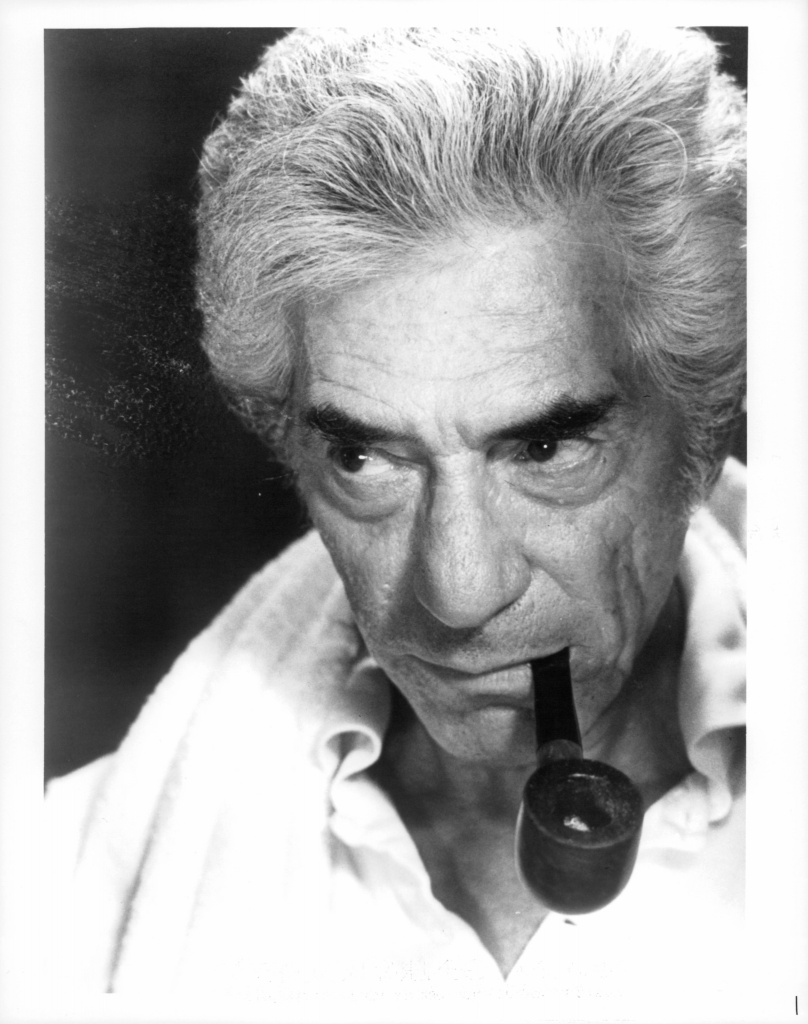
The Roger Deakins Award (Best Cinematography)
Gordon Willis should arguably be next in line to have this category be his namesake if I ever decide to take it away from Roger Deakins (I won’t). Willis has a plethora of beautifully shot films on his resume, with The Godfather being one of his masterpieces. I honestly don’t know if I can single out one specific sequence or scene, because the entire movie feels like a Renaissance painting; and that was the goal. Willis intentionally chose to use a “tableau format” of filming to give it this exact feel – he made use of shadows and low light levels throughout, and interplayed light and dark scenes to give it that trademark Willis look. He also underexposed the film to create a yellow tone throughout, while shooting the scenes in Sicily on the countryside to show the juxtaposition of life for the Corleone’s in New York City, compared to Michael’s life in hiding. If I had to single out one particular shot, I would have to choose the very last scene in the movie. Kay is in the foreground, while Michael is framed in the doorway of his office before one of his capos closes the door. It’s such a perfect way to not only close out the film but communicate how Michael is now shutting Kay out of his life and becoming fully invested in the family business. If you have an extra ten minutes, I highly recommend you give this video a watch, it does a much better job at communicating the brilliance behind Willis’ cinematography than I can.
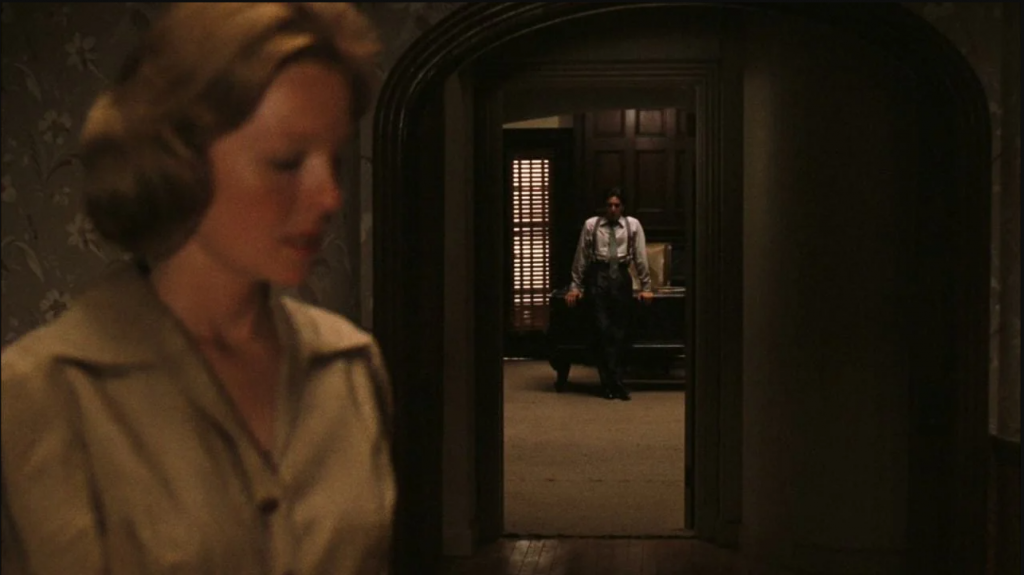
Best Quote
- “Fredo, you’re my older brother, and I love you. But don’t ever take sides with anyone against the Family again. Ever.”
- “My wife is crying upstairs. I hear cars coming to the house. Consigliore of mine, I think it’s time you told your Don what everyone seems to know.”
- “I knew Santino was going to have to go through all this and Fredo… well, Fredo was… But I, I never wanted this for you. I work my whole life, I don’t apologize, to take care of my family. And I refused to be a fool dancing on the strings held by all of those big shots. That’s my life, I don’t apologize for that. But I always thought that when it was your time, that you would be the one to hold the strings. Senator Corleone, Governor Corleone, something.”
- “But I’m a superstitious man, and if some unlucky accident should befall him… if he should be shot in the head by a police officer, or if he should hang himself in his jail cell, or if he’s struck by a bolt of lightning, then I’m going to blame some of the people in this room, and that I do not forgive.”
- “Leave the gun. Take the cannoli.”
- “I’m going to make him an offer he can’t refuse.”
- “Look how they massacred my boy.”
Trivial Pursuit
New category alert! This one is real simple – it’s just small, random pieces of trivia about the movie that can be found throughout the internet.
- Lenny Montana, who played Luca Brasi, was so nervous to be working with Marlon Brando, that he legitimately messed up his lines in the first take – this was used in the final cut. We also see Luca Brasi practicing what he is going to say before going in to meet with Vito, which was also legitimate; Montana was so nervous that he was practicing his lines while the crew was getting b-roll footage of the wedding!
- Francis Ford Coppola was given a two-week “rehearsal” period before filming officially began, so Coppola had all the main cast eat dinner together every night in character – he saw it as a way for the characters to organically develop a family-like bond.
- The cat that Marlon Brando is holding in the opening scene was not in the script – it was a stray that Coppola found on the Paramount lot.
- The smack that Vito gives to Johnny Fontane in the beginning of the film was improvised, which is why the actor looks so legitimately shocked by it.
- Richard Castellano improvised the world-famous “Leave the gun, take the cannoli” line.
- Marlon Brando did not memorize his lines for the movie – there were cue cards all around the set for him to read off of, including an infamous scene where Robert Duvall had them taped to his chest.

Six Degrees of Kevin Bacon
- Marlon Brando: 2 (Brando appeared in A Countess from Hong Kong with Tippi Hedren, who appeared in Jayne Mansfield’s Car with Kevin Bacon)
- James Caan: 2 (Caan appeared in Funny Lady with Roddy McDowall, who appeared in The Big Picture with Kevin Bacon)
- Al Pacino: 2 (Pacino appeared in Two Bits with Ron McLarty, who appeared in Enormous Changes at the Last Minute with Kevin Bacon)
- I checked all the major acting credits for this movie, and the highest number was two. The theory lives!
Concession Stand
This is one of those rare movies where I might actually steer you clear of eating anything during your viewing. It’s not a popcorn flick, and you don’t want that crunch to cover up all the incredible dialogue in the movie, so that eliminates anything crunchy or overly loud to eat. I guess you could maybe get away with eating some pasta and meatballs to feel like you’re actually in the universe of the movie, but some people aren’t really into the idea of eating a whole meal while watching a movie. Honestly, I might suggest just a nice glass of an Italian red wine (a nice Chianti, perhaps?) and calling it a day. You’ll be too locked in to the movie to be thinking about a snack.
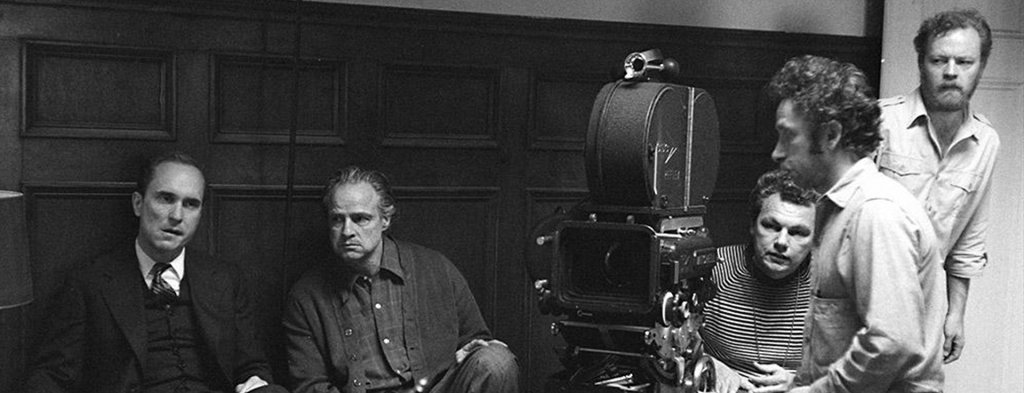
Conclusion
In my last blog, I wrote about how Con Air might be the greatest movie ever made; that was obviously sarcastic. In this blog, I also wrote about how The Godfather might be the greatest movie ever made; that is obviously not sarcastic. I’ve already cleared the air on my take of this movie being the greatest of all time, but I do think it is worth repeating that this is probably the most influential movie made over the last 75 years, and possibly of all time. It reshaped how movies were made, it influenced countless directors to go out and make some other incredible films, and it seeped into pop culture like no other movie before it ever had. This movie has been on my watchlist since I was a child, when I first heard my (Sicilian) uncle quoting it around the house and gushing over it like it was his only child. Finally getting to sit down and watch it (especially as someone who is 25% Sicilian) was an absolute treat, and I can finally understand why so many people revere this movie in the way that they do. I highly recommend you go and watch this if you haven’t already, so long as you can handle a near three-hour runtime and a little bit of early 70s movie violence. It’s an offer you ca – nope, not gonna do it. It’s low hanging fruit, Justin. I’m better than that.
- Sorry to all the Scorsese fans out there, but you have to admit that the art of subtlety is NOT Marty’s strong suit. ↩︎
- The Godfather was the highest-grossing film of 1972 and was the highest-grossing film ever made for four years, until Jaws took the mantle in 1976. ↩︎
- The Godfather is the 32nd-highest rated film on Letterboxd, just behind Parasite and ahead of Vinland Saga. It is number 10 on the “Official Top 250 Narrative Feature Films” list on Letterboxd as well. ↩︎
- The Oscars this year were filled with controversy, particularly for The Godfather. Brando won for Best Actor but became only the second person ever to decline the award, instead sending American Indian Rights activist Sacheen Littlefeather in his place to voice his objection to the depiction of American Indians by Hollywood and television. Nino Rota was initially nominated for Best Original Score, but had the nomination revoked when the Academy learned that Rota had used a similar score in Eduardo De Filippo’s 1958 comedy Fortunella. Al Pacino also boycotted the Oscars, saying that he felt disrespected that he was nominated for Best Supporting Actor and not Best Actor, given that he had more screen time than Brando, who won Best Actor. ↩︎
- For further context, LeBron ended up putting up 45 points and 15 rebounds along with 5 assists, he shot 19-26 from the field, and held Paul Pierce to just 9 points on 4-18 shooting. Some people even credit this as the game that broke up the Celtics’ Big Three. ↩︎
- Michael goes around telling random shop owners his name and has a public wedding ceremony with what seems to be the entire town in attendance, so not sure how well he’s actually doing at hiding out. ↩︎

